Monoprice Premier Series XLR Microphone Cables
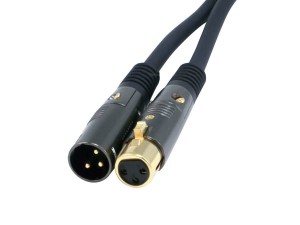
A while back, I was in need of a few more XLR mic cables for use around the studio. After reading some positive reviews of other products from Monoprice, I decided to give their Premier Series XLR Microphone Cables a try. The specs are impressive. They use a thick, rubber-jacketed cable with a braided copper shield, and claim to use 16 AWG conductors (more about that later). The metal XLR connectors have gold-plated pins and are serviceable–as opposed to the molded plastic connectors found on many budget mic cables. Finally, the Monoprice cables sell for considerably less than comparable cables from other brands, and include a lifetime warranty–you certainly won’t get that with any other “budget” mic cables.
Before ordering, I had read a few forum posts and reviews complaining of the Monoprice cables having some handling noise–making static cracks and pops when the cables were moved around while mics were connected with them. Knowing that there’s not much that can go wrong with a mic cable that can’t be fixed with a soldering iron, I dismissed those reports and decided to order some anyway.
Within about a week, I received my cables and removed them from the box. The cable was thick. I mean REALLY thick–thicker than any other mic cables that I’ve ever seen, and more akin in thickness to some medium-duty SPEAKER cables that I own. After a quick visual inspection, I put one to the test. I hooked it up to a large diaphragm condenser mic, connected it to a mic preamp, cranked the gain, and put on my headphones. I started tapping, thumping, twisting, and bending the cable every which way to see if I heard any noise. Sure enough, I heard some intermittent static, popping, and crackling noises. Nothing major, but it was there.
For a comparison, I hooked up one of my other mic cables: a fairly standard Racpo Horizon cable with Neutrik connectors. I put that cable through the same paces, and it was dead quiet–so I had confirmed the presence of the noise on the Monoprice cables. I had also seen a post on the Tape Op forum that suggested that pin 1 may have been connected by a jumper to the shell of the XLR connector on the Monoprice cables. Apparently that can be a good or bad thing (depending upon the specific gear to which the the cable is connected) and could explain the noise. I grabbed a screwdriver and opened up one of the connectors. First, I inspected the solder joints, which looked fine. Sometimes the soldering is very sloppy on budget mic cables, but that wasn’t the case here. Then I took a look at pin 1, and sure enough–it was connected to the shell with a jumper made up of a few thin strands of wire. I clipped that jumper with some wire cutters, re-assembled the connector, and hooked the cable back up. I repeated the tests, and the noise was gone.
It’s worth mentioning that you may not experience any noise with the pin 1 jumper still in place. From what I’ve read, the noise only occurs under certain conditions based upon the different gear that’s being interconnected. So you may be able to use these cables as-is with no trouble at all. In my case, since I’ve built dozens of my own mic cables over the last 25 years and never connected pin 1 to the shell, I decided to go ahead and clip the jumpers on all of my cables.
Among the cables that I ordered was one that was 35 feet in length. I also ordered a couple of extra XLR connectors (one male and one female), planning to cut that 35′ cable in half to make 2 shorter, 17.5-foot cables. I started by cutting the cable right in the middle to inspect the insides. First off, the rubber outer jacket is VERY THICK, which gives the cable most of its heft. If you plan to buy some of this cable in bulk to build your own cables, you may find it too thick to fit through the opening of most standard XLR connectors, so you may as well plan to also order the Monoprice connectors that come stock on this cable while you’re at it. Also, there’s nothing inside the jacket except the shield and inner conductors. There’s no twine, yarn, string, paper, or other “filler” material inside that’s commonly used inside most balanced mic/line cables to add strength and flexibility. In spite of its thickness, the cable is quite soft and flexible. I used my pocket knife to strip off some of the jacket to reveal the braided copper shield. The shield concealed the inner conductors almost completely, so the stated 97.5% shield coverage seems to be accurate.
Next, I peeled back the shield, revealing the two inner conductors–one black and the other a translucent clear. The plastic insulation was fairly hard and rigid compared to other mic cables I’ve worked with. It was also a little harder to strip–my automatic wire strippers just slid off the end without removing any of the insulation. I had to use a traditional pair of wire strippers to score the insulation first and then pull it off the wires. That’s something else to be aware of if you plan to buy some of the Monoprice microphone cable in bulk, in order to make your own cables.
The cables’ specifications state that the inner conductors use 16 AWG wire. I’m a little skeptical of that figure. Like I said earlier, I owned some medium-duty, 16 AWG speaker cables, and the conductors in those cables definitely appear to be thicker than these. When I was scoring the ends of the insulation on the Monoprice cables, I think I used the 18 AWG notch on my wire strippers, so I believe that 18 or 20 AWG more closely corresponds to reality. In any case, the wire conductors are still thicker than most standard mic cables, which commonly use 22 or 24 AWG wire.
Now for the connectors. Each XLR connector consist of 4 pieces–the outer metal shell, the plastic/metal insert with the pins and solder joints, the rubber strain relief boot (which the cable passes through), and a piece that pinches the rubber boot and cable, securing them to the shell. The plastic insert with the pins is secured by a single screw. The piece that pinches the boot and cable is secured by two screws–one on each side of the shell. These connectors seem well made, and were easy to solder. They appear to be higher quality than many of the imported, knock-off connectors that I’ve used in the past. I will mention that I generally prefer connectors with a chuck-style strain relief (the Neutrik-style design), but in this case with such thick cable, the rubber boot seems to work just fine. The connectors were easy enough to solder, and when I was finished I reassembled them using the screws.
In use, these cables work just fine. Since I resolved the noise issue by clipping the pin 1 jumper, I’ve had no issues with them. But after using them for a while now, I have a few minor complaints…
First is the thickness and weight. In my opinion, these cables are thicker and heavier than what a mic cable need be. If you were hauling a tote full of these to a gig, I can imagine the weight would probably be at least 50% more than similar cables of a standard thickness–which is really unnecessary. In fact, when I weighed the two cables for comparison, the 6-ft Monoprice cable came in at over 8 ounces. The Rapco cable weighed only 5 ounces.
Second, the cable is a bit difficult to work with if you plan to build your own. It was difficult to strip, which is not good in my book. I build and modify a lot of my own cables to re-purpose them over time (changing lengths, connectors, etc.). So this is a bit off-putting to me.
Third, I’m not crazy about the connectors. Those small screws are easy to lose, and frankly I don’t like the design of the strain relief. The older I get, the more I’ve come to believe that life is too short for generic XLR connectors. Neutrik connectors are industry-standard, reasonably-priced, easy to install, repair, and maintain, and will normally provide you with years of trouble-free use. Unfortunately, this cable is too thick to use with Neutrik XLR’s.
Fourth, these cables required a modification (clipping the pin 1 jumper) right out of the box to make them function properly without any noise. This wasn’t a major chore, but it did take up a couple of hours to test, identify the problem, and correct it in all of the several cables that I ordered.
For all of these reasons, I don’t plan to order any more Monoprice mic cables for my own use. All of that being said, these are still heavy-duty, quality cables that should generally serve you just fine in the studio or on stage. If you don’t mind clipping the pin 1 jumper, aren’t put off by the larger thickness and heavier weight, and if you don’t plan to be doing any soldering on them, these may not be major issues for you. And when you consider the fact that they include a lifetime warranty, they’re still a great bargain at the price. As for me, I plan to stick with more conventionally-sized mic cables and industry-standard Neutrik connectors in the future.
 February 2, 2020
|
Posted by Jon (admin)
February 2, 2020
|
Posted by Jon (admin)
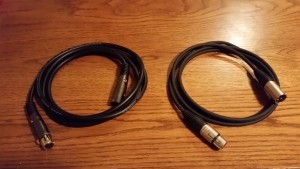
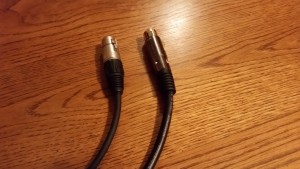
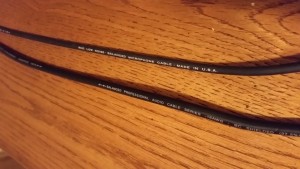
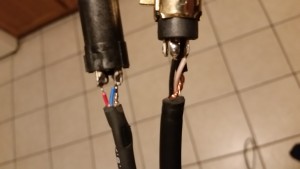
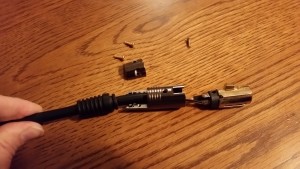
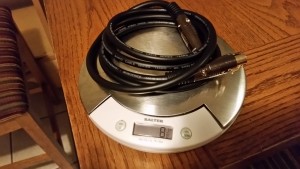
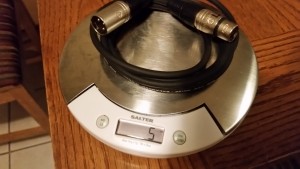
 Categories:
Categories: 